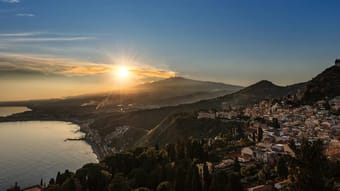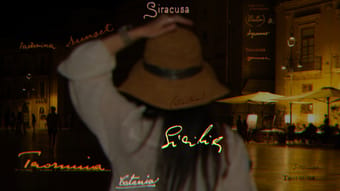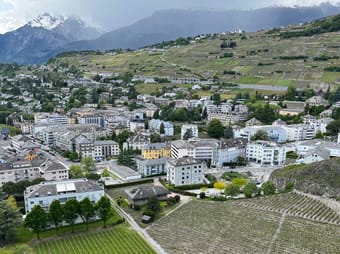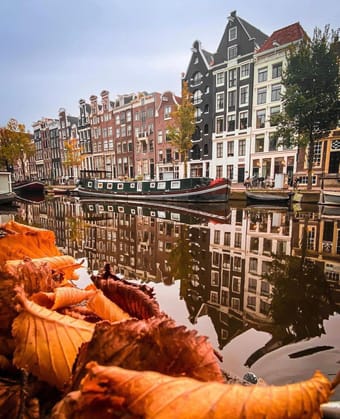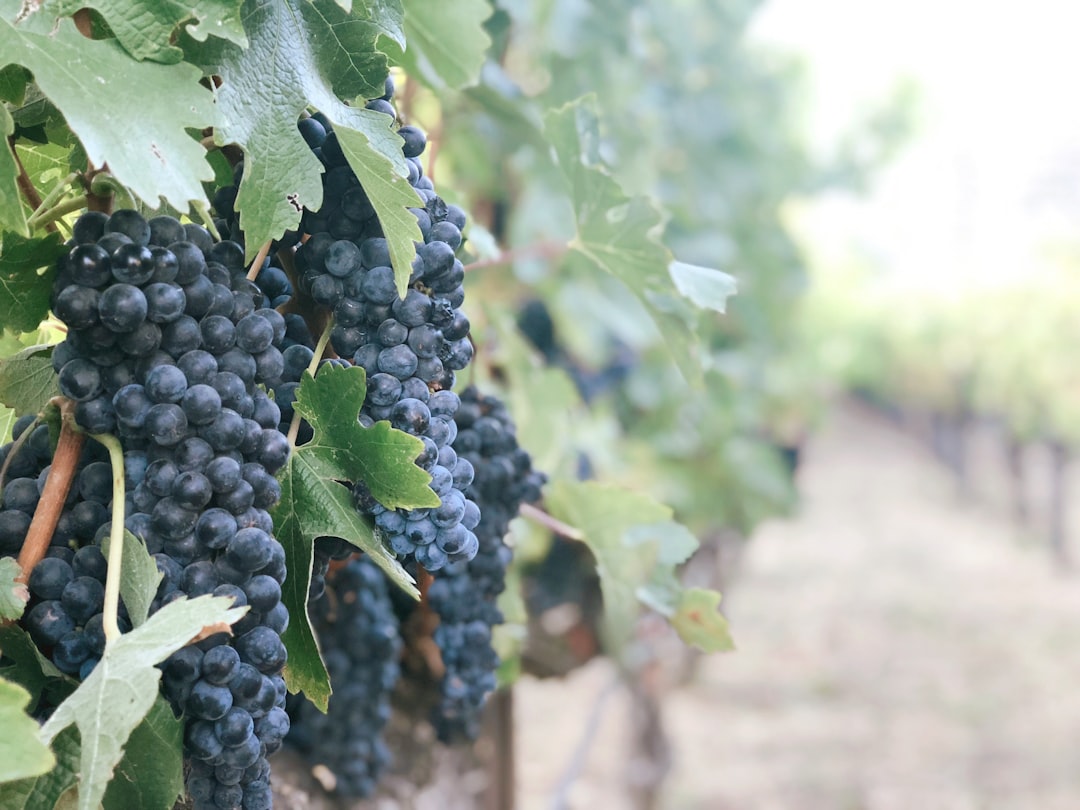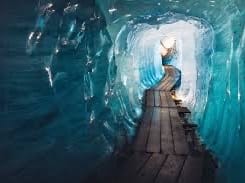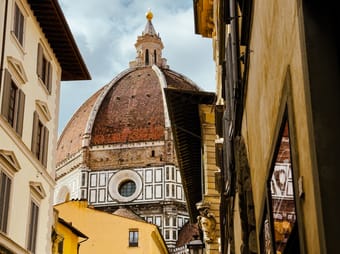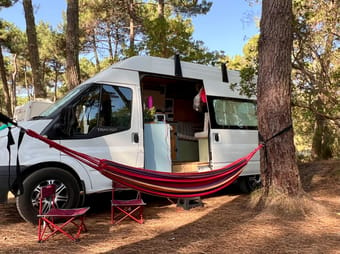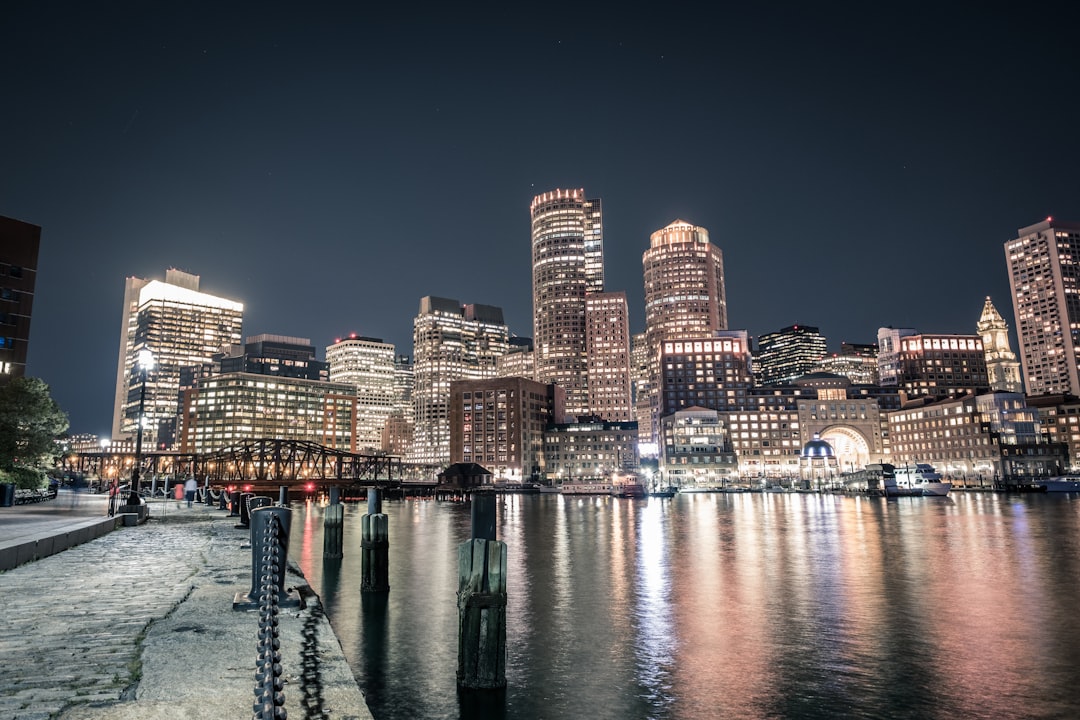Results for Berlin
Discover the captivating charm of Sicily on a 7-day self-guided car journey through enchanting landscapes, historic towns, and cultural treasures. Immerse yourself in the rich history, stunning coastline, and delectable cuisine that Sicily has to offer. This comprehensive itinerary covers four distinct destinations:
📍Bagheri
📍Giardina Naxos
📍Porto Empedocle
📍Monreale.
Each stop offers a unique blend of experiences, from cultural landmarks to local flavors, making your journey a memorable one.
Plus Size • LGBTQ+ • Solo Female • 50+ • Couples • Architecture • Art • Budget • Luxury • Foodie • History • Nature • People & Culture • Romantic • Photography • Wine • Coffee • Beach • Mountain • Relaxation
$20.00
1
Discover the stunning east coastline of Sicily on this 5-day, 4-night adventure, beginning and ending at Catania Airport. It is a point-to-point itinerary that I meticulously planned, implemented, and optimised.
During the trip you'll explore the vibrant city centre of Catania, Taormina's charming streets and parks, and the breathtaking Greek theatre at sunset. Consider an extra day in Taormina to soak in its beauty. Visit Syracuse, the Neapolis Archaeological Park, and enjoy an overnight stay on the historic Island of Ortigia. Wander through Ortigia’s enchanting streets, cathedrals, and castle to conclude your journey.
This journey let you fully embrace the perfect blend of culture, history, and coastal splendor!
My Personal Taste:
You may have already known my style, I seek solitude, classical gardens, and also enjoy blending into the hustle and bustle of urban life. I care deeply about aesthetics and experience. Interested?
In This Guide, You'll Get:
- A point-to-point route that starts and ends at Catania Airport;
- Detailed info on more than 50 places;
- Crucial tips about currency, transport, moving between villages, and more;
- My personal notes on the most impressive places;
- A vibe preview of the journey in my short videos, collected in a playlist.
BONUS
- Two free guides: "My Real TravelSummary", & "Markets are distant lives".
- A free Google map with my favourite places, more that those in this guide, right on your phone!
THANKS
Purchase this guide ahead of time and save them on your mobile device to access it at any time and plan your next destination without worries! 🗺️📱
My guides are mainly divided into two types: map lists and itineraries, feel free to subscribe to my Thatch profile for future updates!
Find me on Youtube for the destination vibe previews and recommendations: @hortusquaerens
🌹🌹🌹
Backpacker • Car-free • Couples • Digital Nomads • Family • Groups • Female Solo • History • Outdoors • Relaxation • People & Culture • Photography • Romantic • Slow Travel • Adventure • Architecture • Art • Boutique • Budget • Coffee • Design • Faith • Foodie • Shopping • Sustainable/Eco
$45.00
$50.00
10% off
2
Fascinating places in Rome - a little bit of this, a little bit of that, mixing classics with some unpopular, hidden gems!
Where to eat/drink (including a bunch of beautiful rooftops), where to shop (outlets, bespoke & made in Italy - brands you rarely find outside this country) and what to visit around (gorgeous sights included, so be sure to check them out and take lots of pictures).
Highlights:
🛵 Vespa - is an Italian luxury brand of scooters and mopeds manufactured by Piaggio. The name means wasp in Italian. An Italian icon since 1946. You’ll see many of these all over the city.
🍕 Roman style Pizza - we encounter "pizza al taglio," which means "by the cut". The scizzas, which are a type of scissors, are used to cut this pizza into square-shaped slices. This helps to maintain the structure of both the toppings and the crust. There is also “pizza bassa”, with a thin base. Roman pizza is practically the opposite to Neapolitan pizza: it is crispy and they are not afraid of toppings. A classic on all menus in Rome is the Capricciosa: topped with ham, mushrooms, olives, artichoke, an egg and tomato. Oil is added to the dough and there is much less water than the Naples version.
🥯 The maritozzo - is a classic sweet pastry, traditionally packed full of whipped cream, which has satisfied Romans for centuries. The dough-based bun is typically eaten in Rome for breakfast but can also be eaten as a hefty snack, or dessert, throughout the day.
☕️ Ristretto - is Italian for "short shots", and that's exactly what this shot of espresso brings to the table. Its main difference is that it takes a shorter extraction time, and uses less water therefore the flavor is rich and bold, and very intense.
🍧 La Grattachecca Romana - a favourite icy drink with fruity flavor; for the Romans, the grattachecca is sacred - strictly prepared by hand in the historical kiosks of the Rioni Trastevere, Testaccio and Prati, in the lively Ponte Milvio area and Trieste and Trionfale districts. Grattachecca derives, in fact, from the action with which the “ghiacciata" (ice) is produced: with a special tool, the ice is scraped off a block, called the "checca" in Roman dialect.
🛍️ When it comes to shopping, Rome can be quite the haven for designer brands, but there is no other fashion house more Roman than Valentino Garavani. The brand’s design (its famous studs) has its origins in the Renaissance architecture of Rome - the “bugnato” technique of the ancient Roman buildings. The largest Valentino store (in the world) lies here, in Rome, on the famous Piazza di Spagna site.
$5.00
18
Barcelona - the capital of Catalonia - is a vibrant and dynamic city, full of exciting things to do. From its stunning architecture to its delicious food and lively culture, there's never a dull moment in this city. Visitors can explore iconic landmarks such as the Sagrada Familia and Palau Nacional, or stroll along the famous La Rambla promenade, taking in the sights and sounds of street performers and vendors. Barcelona is also renowned for its art scene, with world-class museums and galleries showcasing the works of famous artists like Picasso and Miro.
Catalans have their own traditional dishes. Chief among them is pork sausage both cooked (butifarra) and cured (fuet), as well as the ubiquitous pa amb tomàquet (pan con tomate in Spanish), grilled bread rubbed with tomato and garlic, drizzled with olive oil, and sprinkled with sea salt.
For something more local, try fideuà, essentially the Catalan version of paella, made with short noodles instead of rice.
Make sure to sweeten up your trip with:
- xuxo: traditional Catalan pastry with sweet cream filling and sugar coating;
- mel i mato: dessert made from fresh goat cheese drizzled with honey;
- tarta de Santiago: a Galician almond cake made with ground almonds;
- panellets: small, round pastries made from ground almonds and flavored with coffee or lemon
For drinks, have a vermut (vermouth) instead of sangria; it's served over ice and garnished with a slice of orange and/or olives.
Also, you can try Cava, which got its name back in 1970 with the idea of distinguishing it from French champagne, the word meaning ‘Cave’ or ‘cellar’. Cava is rapidly gaining prominence in the world and rivaling champagne, 95% of all Catalan cava is made in Penedès in the vineyards surrounding the village of Sant Sadurní d'Anoia, close to Barcelona.
🏵️ The famous Antoni Gaudí - Spanish architect and designer from Catalonia, known as the greatest exponent of Catalan Modernism - worked almost entirely in or near Barcelona, therefore the city boasts with his works: Casa Batlló, Casa Milá La Pedrera (you can grasp a sight of the interior while having a coffee at Cafe de la Pedrera
DON'T MISS: the gift shop is amazing), Casa Vicens, Park Güell, Sagrada Família church, etc.
⚽️ For football enthusiats: you have to take a look around Camp Nou.
💡A trip to Abbey of Montserrat would also make a great idea.
⛱️Perhaps a day trip to Costa Brava (90 min by bus)?! 😎
🛍️When it comes to shopping, make sure you visit Girona Street. Here, outlet stores welcome visitors with open arms, offering tempting deals and unique finds.
Accessibility • Budget • Coffee • Foodie • Relaxation • Shopping • People & Culture • Art
$5.00
29
London is one of the greatest cities in the world and holds in so many wonders…in plain sight or just hidden around. So shopping here could make for a great experience, not to be missed out on & should benefit from a guideline like this to make it easier for everyone! 😁
There are so many famous brands (Burberry, Vivienne Westwood, etc.), artists (the Beatles, Queen, Spice Girls etc.), movie/book characters (Sherlock Holmes, the Paddington Bear, Mr. Bean, Harry Potter, etc.) - and less known ones - originating from this country and particulary from London, that one could take home a full bag of souvenirs. ❗️Mind the quality and the prices, though, ‘cuz this is not the cheapest city to shop around❗️
Highlights:
🇬🇧 The Union Jack or Union Flag, is the de facto national flag of the United Kingdom. The flag consists of three heraldic crosses. Brits do take pride in this flag and you’ll see it depicted around quite often (on various items that make for great souvenirs).
Free
3
This guide takes you on a sassy tour of the city of the canals or the “Venice of the North” - with a bit of something for everyone!
The city is famous for its arhitecture, art museums and traditions that are well kept alive and praised. But it is also famous for cannabis-serving coffeeshops (this guide provides a list with such venues), red-light district, quirky bars and bizarre museums.
So, whether on foot or by bike/boat, take this guide & stroll around this outstanding city in search for fun, food, souvenirs and all those Dutch vibes that you heard so much about.
When it comes to traditional food, be sure to try:
- Haring or 'Hollandse Nieuwe' (Dutch new herring), probably the most famous Dutch food. Pickled herring is a delicacy in Holland. The raw herring is served together with chopped raw onions and gherkins.
- Stamppot, an old dish of mashed potatoes combined with root vegetables, like turnip, carrot and onion, but it can also include dark, leafy greens like kale/spinach (make sure you order it the traditional way, with smoked sausage).
- Erwtensoep, a thick split pea soup;
- Bitterballen similar to a scotch egg, they are balls of finely chopped beef or veal that are seasoned with a mixture of spices, then rolled in bread crumbs and deep fried.
Also, make sure you try out some desserts:
- Poffertjes, small pancakes, baked in an iron skillet and traditionally served with melted butter, dusted with icing sugar
- Pannenkoeken, another traditional sort of pancakes
- Oliebollen ‘oil spheres' are balls of dumpling batter fried in hot oil and later sprinkled with icing sugar.
Highlights:
🌷Dutch tulips - It was in the 16th century that tulips were imported to Holland from the Ottoman Empire. In no time, tulips became the most sought-after commodity in the entire Netherlands, after Carolus Clusius wrote what's considered the first major book about the flower. In the early 1600s, professional cultivators of tulips began to refine techniques to grow and produce the flowers locally in Holland, establishing a flourishing business sector that has persisted to this day.
The tulips mostly bloom during the spring season, from mid-April to mid-May, in Amsterdam. The Tulip Festival will begin on March 23rd and go on till May 14th, 2023
👡 Klompen - Dutch clogs are a type of footwear made in part or completely from wood. The iconic footwear of the Netherlands were the shoes of choice for Dutch laborers of centuries past. The wooden slip-ons were sturdy, cheap and—when stuffed with straw—cozy and warm. The first Dutch clog is dated from the year 1230. The shoe is deeply ingrained in Dutch culture and some people in rural areas still wear them today!
🚲 Dutch bikes - are a style of urban commuting bikes that have been used in the Netherlands for decades and have grown in popularity in cities around the world. Dutch bicycles are upright or “sit-up” style – with taller frames than typical bicycles. This position allows for very good visibility and great comfort. A popular form of Dutch bicycles is the Omafiets (translates to Grandma's bike).
🗼 Dutch windmills - were built originally to pump the water out from the land because the Netherlands is so flat and below sea level. With the land always getting flooded, farming was almost impossible, hence the need to force out the water by means of the windmills.
🧇 Stroopwafel - the most classic of all Dutch sweets and a perfect gift from Holland - literally means “syrup waffle” and it’s a round crunchy waffle with chewy caramel filling. The correct way of eating it is: put it on your coffee or tea cup and wait for a minute until the caramel melts and the waffle warms up – it enhances its flavour and makes it taste as fresh from the oven. Delicious!
🧀 Dutch cheese - especially Gouda, Edam and Maasdam, well known and exported all over the world. Apart from the classics, try some really special ones: a turquoise-coloured cheese with lavender, pink-coloured cheese with red pesto, champagne gouda or even… coconut gouda! A typical cheese from Amsterdam is Old Amsterdam, exceptional premium aged gouda cheese.
🥃 Genever (also called Jenever) - is the traditional liquor of the Netherlands, from which gin has evolved. Some tasters say the flavor of this spirit is similar to white whiskey. Oude (old) genever is the traditional style, with a malty botanical flavor. Jonge (young) genever is a newer recipe with a cleaner taste, more similar to vodka.
There are several genever distilleries in Amsterdam, each with their own secret recipes.
Solo Female • Groups • Adventure • Architecture • Art • Foodie • History • Shopping
$5.00
23
I grew up in Northern New York, but both of my parents worked in Vermont. Which meant I spent quite a lot of time in Vermont. As I got older, I started to travel more around the state, and even lived on the New Hampshire/Vermont border, so I got to know Vermont quite well. I recommend renting a car, or sprinter/camper van to drive around Vermont to check out all of my favorite places here. In this guide, I write about my favorite towns to visit for you to experience what Vermont is truly like for the locals. #ilovermont
Adventure • Outdoors • Foodie • People & Culture • Road Trip
$14.44
0
Christmas holiday season in Europe always brings some childish joy and fills the beginning of winter with some magic. Discover European cities with the best and most atmospheric Christmas Markets! Check opening dates for 2024-2025 and choose your winter destination!
We will monitore the dates and update them accordingly.
Don't forget to subscribe to get the notifications.
People & Culture
Free
1
Free
4
Switzerland is a treasure trove of exciting activities for families, offering a perfect blend of adventure, education, and fun. Whether you're exploring the majestic Alps or delving into the rich cultural heritage, there's something for every child to enjoy. Here are some fantastic activities to make your family trip to Switzerland unforgettable.
Free
0
Ecco una “food guide” per chi trascorre qualche giorno a Firenze! Una selezione accurata di locali, dalla colazione fino alla cena, pensata per chi non vuole perdere tempo a cercare il posto giusto in cui fermarsi a mangiare!
Here is a “food guide” for those who spend a few days in Florence! A careful selection of places, from breakfast to dinner, designed for those who do not want to waste time looking for the right place to stop for a meal!
Free
1
Passing through Naples on your way to another city and don't want to break the bank? Or maybe this city is the highlight of your trip? Either way, this is the guide for you! Conveniently discover the highlights of Naples in one day, all without a car. Even if you have more than a day in Naples, I'd recommend this guide to distinguish the top sights and get a feel for their costs.
50+ • Accessibility • Backpacker • Car-free • Couples • Digital Nomads • Family • Groups • Female Solo • Architecture • Boutique • Budget • History • People & Culture
Free
3
This is an itinerary I made with my family, we did a lot of places in a short period of time, you can definitively stay longer in some places, or do just one part of it ( for example only Galicia , Cantabria & Asturias; or only Pais Vasco )
The only place I would skip in this itinerary is Vigo, the rest of them are incredibly nice. Orense is nothing special but the Canyon is worth visiting.
50+ • Backpacker • Couples • Family • Groups • LGBTQ+ • Plus Size • Female Solo • Adventure • Budget • Foodie • Outdoors • Photography • Road Trip • Van Life
Free
6
All the places we visited on our 71 day road trip.
The route went down from Calais on the west of France for a week including another week in the Pyrenees.
The north of Spain and Basque region for around 2 weeks.
Down through Portugal including Porto, Lisbon and the Algarve for around 4 weeks.
A few spots in the south of Spain from the drive back home which took us 10 days.
Finally finishing in Bruges, Belgium.
All of my photos from this road trip are on my Instagram which is @takeme.travelling. You are welcome to ask me any questions you wish.
Backpacker • Digital Nomads • Adventure • Architecture • Budget • Road Trip • Foodie • Outdoors • Van Life • Sustainable/Eco • Wine
$10.00
2
If you are looking to plan the perfect fall foliage roadtrip adventure to Vermont, then this ultimate guide is for you!
I LOVE Fall and as someone who loves a good roadtrip, I put together this guide to share some of my favorite Vermont spots and recommendations for the best things to do, see and eat to help you plan the perfect Autumn trip!
This guide is in both a list form and interactive map, and showcases:
*Local farms to visit
*The BEST places to find cider donuts and fall snacks
*Covered bridges
*Waterfalls, lakes, and scenic spots to explore
*The BEST towns to visit
*Picturesque churches
*Local shops for all things Vermont
*Great coffee shops and quick bites
*Restaurants and bars
*Vermont Visitor Centers
If your fall foliage roadtrip is also taking you to New York State, New York City, and/or New Hampshire, make sure to check out my other guides and itineraries for those areas.
You can also find me on Instagram & TikTok at @adventuressashley for Fall / Autumn trip inspiration and tips!
Adventure • Nature • Road Trip • Van Life • Photography • Coffee • Foodie • Shopping
$20.00
11
Ask ThatchGPT
